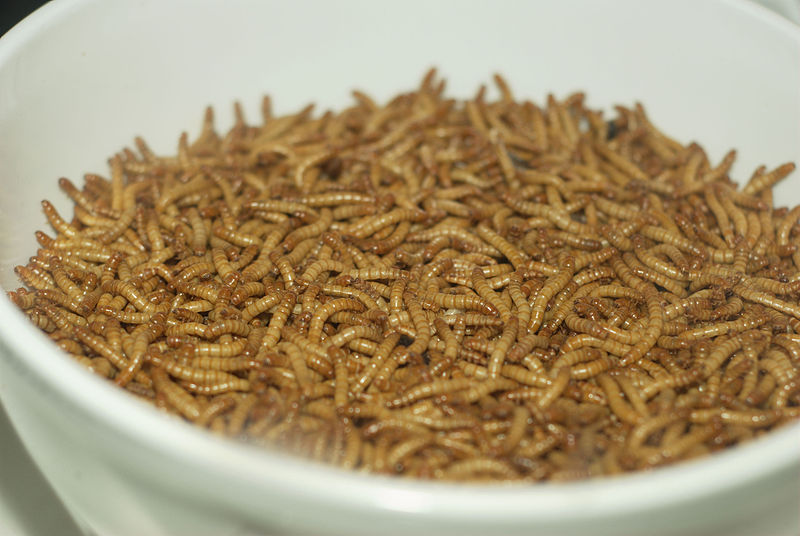Will Your Next Burger Be Ground-Up Mealworms?

The wriggly beetle larvae known as mealworms could one day dominate supermarket shelves as a more sustainable alternative to chicken, beef, pork and milk, researchers in the Netherlands say.
Currently, livestock use about 70 percent of all farmland. In addition, the demand for animal protein continues to rise globally, and is expected to grow by up to 80 percent between 2012 and 2050.
The act of clearing land for livestock is one that damages the environments on which people and other life depend. For instance, it helps release global warming gases.
Conventional livestock take up so much in the way of environmental resources that some have long suggested that creatures lower down in the food chain — insects — might in theory provide just as much protein in a more environmentally friendly way. However, little data are available on the environmental impacts associated with insect production, said researcher Dennis Oonincx at Wageningen University in the Netherlands.
To see if insects really might be a more sustainable food source than livestock, Oonincx and his colleagues analyzed what global warming gases insects might generate as a result of respiration, the production of their feed, distribution networks to stores where they would get sold, and emissions from the heating of climate-controlled rearing facilities.
The researchers found that growing mealworms released less greenhouse gases than producing cow milk, chicken, pork and beef. They also discovered that growing mealworms takes up only about 10 percent of the land used for production of beef, 30 percent of the land used for pork and 40 percent of the land needed for chickens to generate similar amounts of protein. The researchers note that optimizing mealworm growth might lead to even more land savings. [Save the Planet? 10 Bizarre Solutions]
"Since the population of our planet keeps growing, and the amount of land on this Earth is limited, a more efficient, and more sustainable system of food production is needed," Oonincx said in a statement. "Now, for the first time it has been shown that mealworms, and possibly other edible insects, can aid in achieving such a system."
Get the world’s most fascinating discoveries delivered straight to your inbox.
The scientists did find the amount of energy used to produce mealworms per pound of edible protein was similar to that for pork and 46 percent to 88 percent more than that for chicken, although it was still half or less than for beef. This is in large part due to the fact that mealworms must be kept in heated environments to keep them within a certain range of temperatures for growth.
"These questions they're addressing are really relevant to sustainability — this is very exciting work," said entomologist Brian Fisher at the California Academy of Sciences, who did not take part in this research. "This addresses how we're going to grow food in a way that doesn't jeopardize how our children and their children live, and offers another reason why we should explore insects as a protein source."
The biggest objection this idea faces is probably the squeamishness the public has toward eating insects.
"We need to promote a campaign along the lines of, 'If it's okay to eat sushi, it's okay to eat insects,'" Fisher told LiveScience. "If you eat lobster, eating insects is pretty much the same thing."
Moreover, people might not have to eat the insects directly. Rather, they could be ground up and used as protein-rich supplements to food, Fisher noted.
"The freeze-dried forms of mealworms produced in the Netherlands are easy to grind into a powder on your kitchen countertop. I have already used them with good success in brownies," said entomologist Florence Dunkel at the University of Montana, who did not participate in this study.
As to what mealworms taste like, "it depends on what you fed them, but most times they're a bit nutty-flavored," Fisher said. "People love them if they're cooked right.
The scientists detailed their findings online Dec. 19 in the journal PLoS ONE.
Follow LiveScience on Twitter @livescience. We're also on Facebook & Google+.



